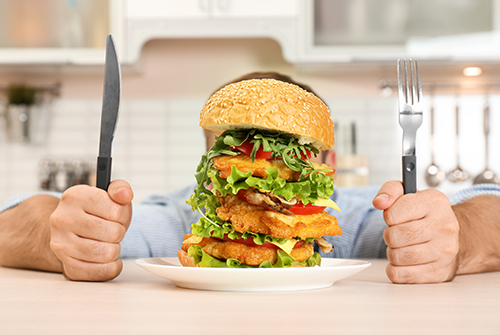 What Makes Me Hangry?
What Makes Me Hangry?
Has anyone ever told you, “You’re not you when you’re hungry?”
There’s a simple explanation: When we don’t eat for long periods of time, our body’s glucose levels drop, making it harder to control feelings of anger and irritability. In other words, being hangry is a real physiological condition!
In order for our brain to function properly, it needs glucose for energy. We get this energy source from the foods we eat—primarily carbohydrates. When blood sugar levels get low, certain hormones kick in that produce a hunger signal. If we ignore that signal and the urge to eat, it can lead to dizziness, nausea and, for some people, a short temper.
The best way to avoid or eliminate hanger is to stay in tune with hunger feelings. “Many people experiencing hanger tend to grab the first foods they can get their hands on, such as candy or chips. These foods aren’t the most nutritious and only temporarily raise blood sugar levels,” said Dr. Jenna Anding ’87, a Texas A&M University nutrition science professor and AgriLife Extension specialist. “If you start to feel hungry but your next meal is a couple of hours away, try to snack on foods like whole fruit, nuts, cheese or peanut butter crackers to fight off hanger pangs.”